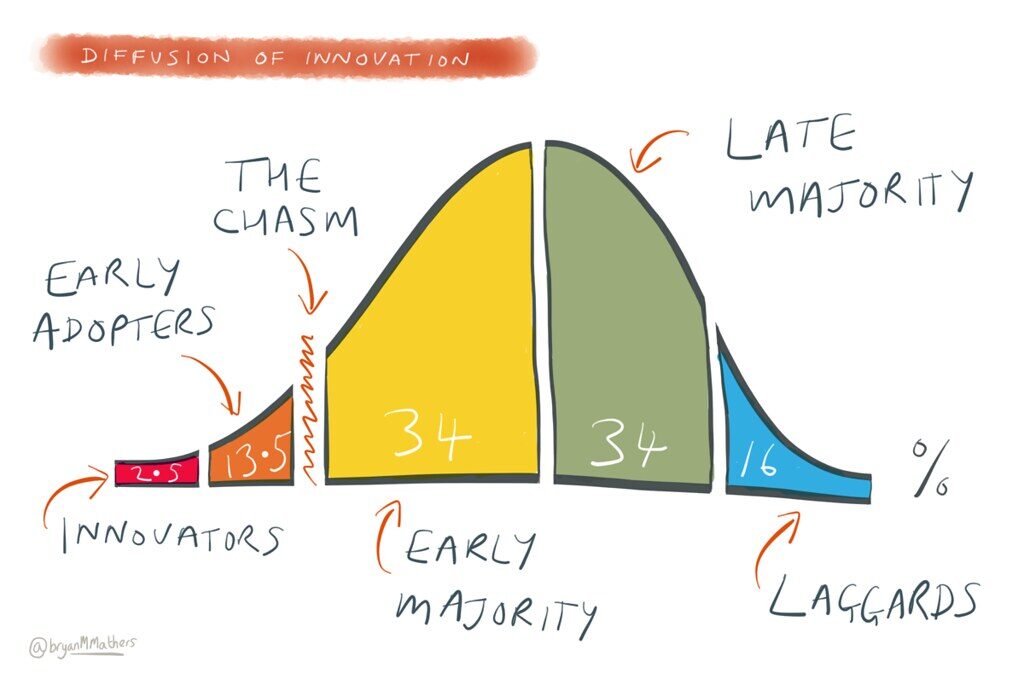For Lent, I’m giving up something big: the church I always knew. And, unlike past Lenten disciplines that ended on Easter, this change is one I expect to be permanent.
Slow to Change
I remember learning in seminary that the church in all of its forms tends to change more slowly than the dominant culture. And, I remember hearing cases for why this was positive as well as ways in which it could be negative. Additionally, I recall a phase known to many as the seven last words of the church: “we never did it that way before.”
Academically I was able to grasp the challenge of leading a local congregation that would change more slowly than nearby businesses or other local organizations. Pragmatically, I never did and am not sure I ever will be able to fully accept this as normative.
Diffusion of Innovation
The diffusion of innovation theory first published by E. M. Rogers back in 1962 remains the most widely cited model for understanding how people adopt new ideas and new technologies. In short, people do not embrace the new thing all at once.

Laggards
The churches I know best and have spent most of my life in tend to fall into the late majority and laggard category for adoption of new technologies.
The pandemic has forced many to accelerate change in order to provide content to their parishioners when it is unsafe to attempt doing so exclusively or primarily in a face to face format. I know of many congregations that had never livestreamed anything before the pandemic, but that now livestream one or more services each week. And, I know of many congregations that suddenly started leveraging their social media accounts in much more robust ways and others that created new social accounts and now use them as the primary communication channel.
So What?
Now is the time for churches to learn from the pandemic. Imagine a future for the group most commonly known as Mainline Protestant that featured a shift from the far right to the far left of the Roger’s model.
A permanent move left on the model will be necessary for churches to thrive in a late pandemic and a post pandemic world. Even in a post-pandemic world technology will be essential for all aspects of congregational life, including worship. People will expect to have options beyond the in person experience (see Giving Up Worship in Indoor Sacred Spaces).
I’d welcome your thoughts.
- What are your congregation’s leaders doing now to help ensure that things don’t just return to pre-pandemic norms once the pandemic ends?
- How different would it be for more congregations to be innovators and early adopters rather than late adopters and laggards?
- What would be needed for your congregation to move up one category? two categories? three or more?